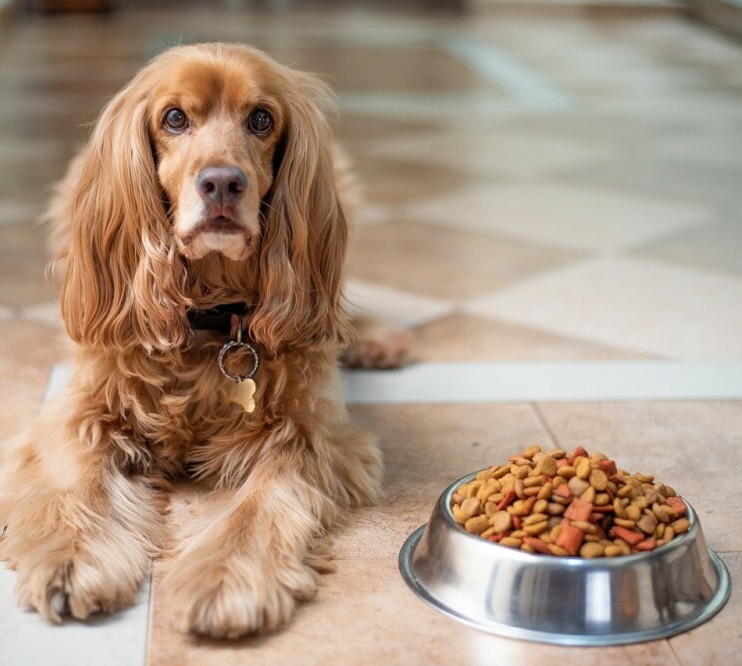
Figuring out the ideal feeding frequency for your dog isn’t just about sticking to a number. Like with people, every dog has its own unique needs based on a range of factors, such as breed, size, age, and energy expenditure. If you have a sprightly Jack Russell Terrier, they’ll likely need a different feeding schedule compared to a laid-back Bulldog. In our experience, the one-size-fits-all approach falls short when it comes to the health and happiness of your furry friends.
In our opinion, proper nutrition forms the cornerstone of a dog’s health. And it isn’t just about the amount of food you give but also the frequency and quality. Sure, keeping your dog’s tail wagging at mealtimes is important, but you’re also looking to maintain their overall vitality, keep their coat shiny, and support their digestive health. Trust me, we’ve seen the transformation in dogs when they switch from random, sporadic meals to a routine that’s tailored to their individual needs.
There are a few common misunderstandings we’ve encountered regarding how often dogs should be fed. We’re going to bust a couple of them right now. For instance, the belief that all adult dogs should be fed once a day is not universal. Some do fine with one meal, while others thrive on two smaller portions. And then, ‘free feeding,’ or leaving food out all day, can be a no-no for dogs who don’t know when to stop. The point here is to emphasize that there’s no one-size-fits-all; it’s about customizing the plan to your dog’s needs.
Looking for fresh dog food delivered? Click here.

Nutritional Building Blocks for Canines
So, you’re looking to understand what makes up a balanced diet for your dog. It’s not just about filling the bowl; it’s about ensuring your furry friend gets the right amount of protein, fats, carbohydrates, vitamins, and minerals. Protein is particularly crucial for dogs; it helps maintain healthy muscles and supports a robust immune system. That’s going to include high-quality sources like meat, fish, and eggs.
Now, portion size is another area where we see dog owners scratching their heads. You might be asking, ‘How much should I actually feed my dog?’ The answer varies. A lively Border Collie who herds sheep all day is going to need more calories than a Chihuahua who lounges on the couch. Choose something that resonates with your dog’s activity level. Use the feeding guidelines on your dog food’s packaging as a starting point, but don’t worry too much about tweaking it as you go.
Here’s a quick tip: watch your dog’s body condition. If you’re noticing your dog looking a bit rounder, it’s probably time to cut back on the kibble. On the other hand, if you’re seeing ribs, it’s a telltale sign to increase their portions. Monitoring weight and adjusting amounts is key to maintaining your dog’s optimal health.
Now what is a big deal is when and how you’re delivering these meals. That’s going to include making a choice between a set schedule or free feeding, which leads me to the next topic that’s quite important. It’s a choice every dog owner faces, and each method has its benefits and potential drawbacks.

Comparing Feeding Strategies: Scheduled Meals vs. Free Feeding
We’re going to walk you through the two primary ways you can feed your dog: sticking to a set schedule or leaving food in their bowl all day, also known as free feeding.
Scheduled feeding involves providing meals at specific times of the day, which could be once, twice, or more daily. This method helps in maintaining a routine, which dogs often find comforting. It also aids in monitoring your dog’s appetite and health, as well as preventing obesity since you’re in control of their portion sizes.
One potential downside of scheduled feeding is that it doesn’t allow dogs to follow their natural eating instincts, which in the wild would involve periods of both feasting and fasting.
Then there’s free feeding, which means leaving food out for your dog to eat whenever they choose. This can be convenient and mimics the on-demand feeding they would experience in the wild. It might also reduce anxiety for dogs who worry about their next meal.
However, free feeding can make it more difficult to monitor how much your dog actually eats, which can be a problem for weight management. It could also lead to food becoming stale, reducing its palatability and potentially its nutritional value.
Deciding between these two methods isn’t a one-size-fits-all scenario. If you have a dog with high self-regulation capabilities, free feeding might work fine. But if your dog is an overeater or has specific dietary needs, scheduled feeding might be the way to go.
Coming up in the next section, we’ll conclude by weighing the advantages and highlights what might be the best feeding method for your furry friend.

Concluding Thoughts: Finding the Best Feeding Routine
We’re going to wrap this up by reinforcing the importance of the right feeding routine for your furry friend. It’s not just about the frequency; it’s also about ensuring that every meal counts towards their health and happiness. Whether you’re feeding on a set schedule or embracing free feeding, the key is to be consistent. Dogs thrive when they have a routine they can trust.
Remember, your first attempt doesn’t need to be your last. You can always adjust your approach down the road as you learn more about your dog’s individual needs and habits. Don’t worry too much about getting it perfect right away—it’s about making informed adjustments that benefit your buddy over time.
Above all, if you want to be absolutely certain you’re on the right path with your dog’s diet and feeding schedule, don’t hesitate to reach out to a vet. They’re the experts, after all. A professional’s insight can provide you with peace of mind and your dog with a tailor-fitted diet plan.
In our experience, paying close attention to your dog’s signals, such as their energy levels, weight, and overall demeanor can give you a lot of information about whether their diet is working for them. It’s also about choosing something that resonates with you and fits into your lifestyle so that it’s sustainable.
Our hope is that this guide helps you find the feeding solution that lets your dog lead a healthy, energetic life. Remember, every dog is unique, and what works for one might not work for another. So choose the method that seems most nourishing for your dog’s mind and body, and stay observant, patient, and willing to adapt. Your furry companion depends on you, and with a little effort, you can tailor a feeding schedule that suits both your lifestyles perfectly.
Looking for fresh dog food delivered? Click here.

